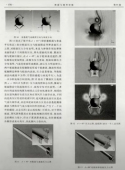I think you're misinterpreting it slightly.
The advertised range for missiles are dependent on the circumstances of the launch aircraft and the circumstances of the target.
For example, it's absolutely possible for a BVRAAM with a listed range of 70km to be able to hit a target at 100km distance if the circumstances of the launch aircraft and the target are complementary enough.
However that doesn't mean 100km is worthwhile listing as an advertised range because if the circumstances are unrealistic and significantly non-representative of combat conditions, then why even list it?
For the SD-10A specifically, we do not know whether it was a downgraded version of the domestic version available at the time or whether there is a better domestic version available.
It may well be possible that the kill at 100km range is using a PL-12 variant at the time which was not greatly superior to the SD-10A, and that SD-10A itself is also capable of kills at 100km range in similar circumstances. After all, the PL-12 in the early 2000s would have been succeeded by more capable PL-12 variants before PL-15 emerged.
For PL-15E, we have definitive confirmation already from the institute at the airshow last year that the domestic version has superior performance including range (200km+) to the export version (150km)
For PL-10E, it is possible but who knows.
The PL-12 was tested by the J-10 in the early 2000s. At the time the missile hasn’t entered serial production so I don’t think it was “stable” enough compared with both PL-12 and SD-10, both of which probably are superior to it performance-wise.
As per a Luoyang Electro-Optical Tech employee there is a modified variant of PL-12 with greater range and performance than the SD-10A. This is corroborated by Li Zhonghua’s presentation on Falcon Strike 2015 where he flat out stated that PL-12 is equivalent to AIM-120C performance wise and superior to R-77. Not sure if that version is available for export.

